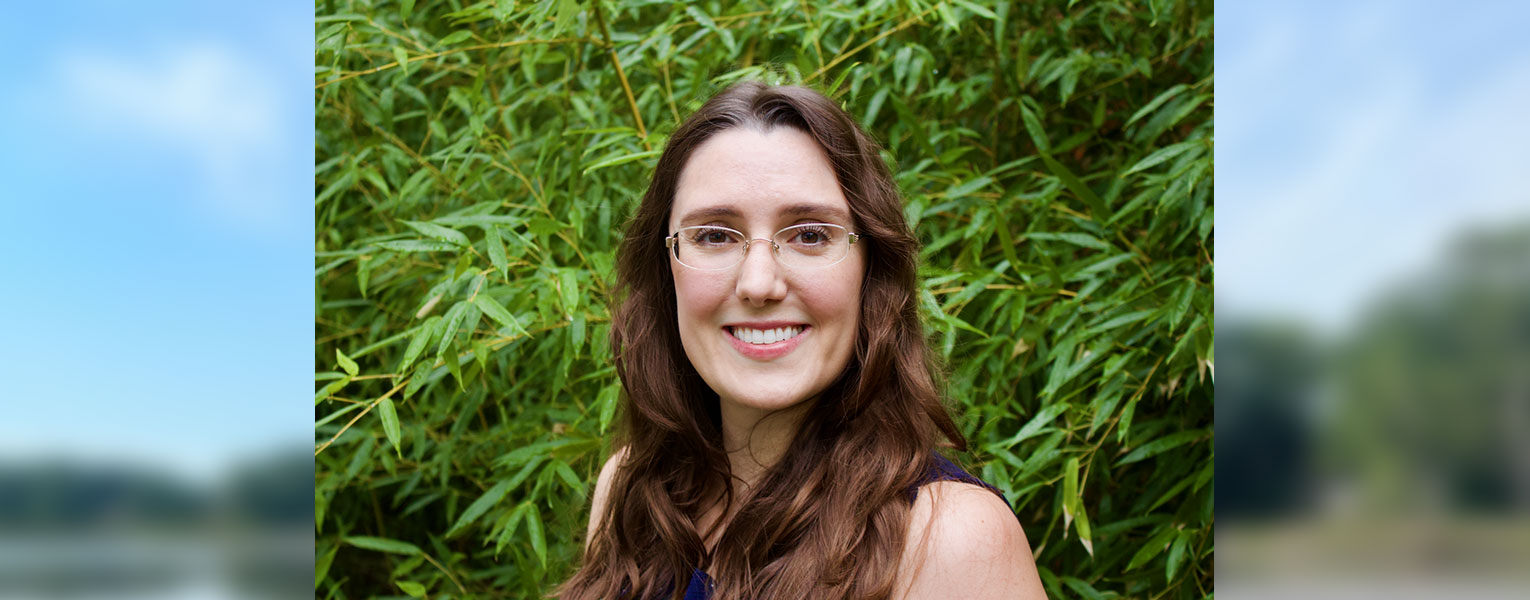3/29/2024
Faculty Spotlight: Katharine Napora, Ph.D.
Studying the Ancient Past for a More Sustainable Future
By Bethany Augliere
Using clues from ancient organisms, like trees and clams, Katharine Napora, Ph.D., examines how cultures of the past interacted with the coastal environment to improve sustainability in the 21st century.
While her research reveals information about the ancient past, it also reveals more sustainable ways that people can try to implement into today’s society to improve sustainability and conservation, said Napora, an assistant professor in the Dorothy F. Schmidt College of Arts and Letters. “As an archaeologist, people think our work is really cool, which it is,” said Napora, “But it’s vital to emphasize why it’s important and why it’s going to help us today.”
Currently, Napora has a project to study freshwater mussels, many of which are endangered or imperiled across the country. “They are a cornerstone species of rivers throughout the eastern United States keeping waters clean and forming the base of the food web,” she said. In the past however, these animals thrived. So, Napora is trying to determine if she can detect the natural levels of heavy metals in the rivers before large-scale industrial coal mining started in the1800s. Since she has partnered with the Kentucky Department of Fish and Wildlife, “we’re trying to use that data to improve regulations in waterways in the future, hopefully,” she said.
In Florida, she has also started working on a project at the Jupiter Inlet Lighthouse Outstanding Natural Area to study an ancient village “that existed maybe 1,000 or 2,000 years ago,” she said. She’s curious if the people were sustainably harvesting the local shellfish species. For that work, she and her colleagues from the Florida Public Archaeology Network were awarded a large grant from the U.S. Bureau of Land Management (BLM).
With that BLM grant, she’s been able to take 6-feet cores into the ground and collect material that includes remains of the shells and other animal bones from that site. “We’ve already learned some neat things about that site that weren't known before,” Napora said. For instance, it appears that the site was inhabited by people at two different times. The next step, she said, is to radiocarbon date the samples to figure out when the site was inhabited and how it changed through time.
Another one of her projects focuses on trees that could help future conservation efforts along the coast. Between 4,000 and 3,000 years ago, groups of ancient trees died on the coast of Georgia— maybe from a hurricane pushing saltwater into the forest, or a sea level rise event, she said. The trees have been well-preserved in mud without oxygen. Partnering with a geneticist, Napora is determining which trees survived saltwater intrusion events, then comparing DNA of trees that survived versus those that died to look for differences. “If we can do that, then we can try to identify those same genetic markers in modern tree saplings, and preferentially choose those for coastal restoration projects because they’d be more likely to survive hurricanes or sea level rise.”
Prior to her employment at Florida Atlantic, Napora was a William S. Webb Museum of Anthropology and Office of State Archaeology postdoctoral scholar at the University of Kentucky. She earned a doctorate in anthropology from the University of Georgia, a master’s degree in social sciences from the University of Chicago and a bachelor’s degree in archeology from the University of Virginia.
Napora has always loved archeology. As a child, she poured over books of ancient Egypt and Rome. But, she also always had a passion for the ocean and enjoyed kayaking, swimming and boating. When she was younger, she thought she’d have to choose between being marine science and archeology, she said. “I was really lucky that I was able to combine those two passions,” Napora said.
For young learners or students who have an interest in archeology and pursuing this field, her number one recommendation is to read and stay aware of opportunities. Napora is always inspired to get people interested in archeology. Part of her work with the BLM grant is public outreach as well. She’s co-running an archaeological field school up in Jupiter to train students and lifelong learners in archaeological methods.
“I've had several families with kids who were part of local history groups around here in South Florida, who have reached out to me and told me their kids are interested in archaeology,” she said. “So, I've invited them and given them a tour of some of our archaeology laboratories that I supervise. I'm happy to do that type of work to try to inspire everybody to go into the study of the past.”
If you would like more information, please contact us at dorcommunications@fau.edu.
